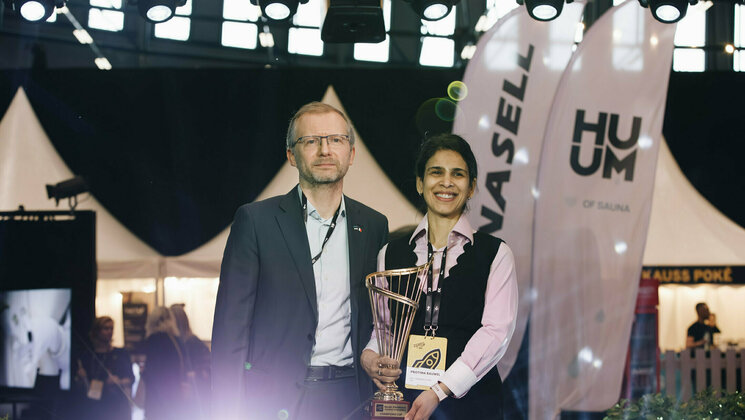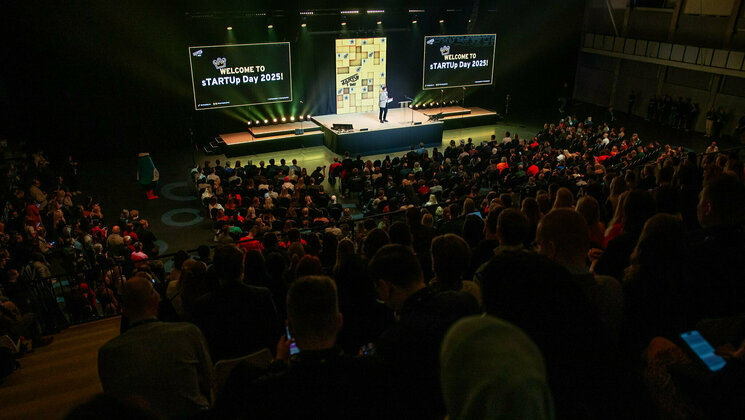-
Faculty of Arts and HumanitiesDean's Office, Faculty of Arts and HumanitiesJakobi 2, r 116-121 51005 Tartu linn, Tartu linn, Tartumaa EST0Institute of History and ArchaeologyJakobi 2 51005 Tartu linn, Tartu linn, Tartumaa EST0Institute of Estonian and General LinguisticsJakobi 2, IV korrus 51005 Tartu linn, Tartu linn, Tartumaa EST0Institute of Philosophy and SemioticsJakobi 2, III korrus, ruumid 302-337 51005 Tartu linn, Tartu linn, Tartumaa EST0Institute of Cultural ResearchÜlikooli 16 51003 Tartu linn, Tartu linn, Tartumaa EST0Institute of Foreign Languages and CulturesLossi 3 51003 Tartu linn, Tartu linn, Tartumaa EST0School of Theology and Religious StudiesÜlikooli 18 50090 Tartu linn, Tartu linn, Tartumaa EST0Viljandi Culture AcademyPosti 1 71004 Viljandi linn, Viljandimaa EST0Professors emeriti, Faculty of Arts and Humanities0Associate Professors emeriti, Faculty of Arts and Humanities0Faculty of Social SciencesDean's Office, Faculty of Social SciencesLossi 36 51003 Tartu linn, Tartu linn, Tartumaa EST0Institute of EducationJakobi 5 51005 Tartu linn, Tartu linn, Tartumaa EST0Johan Skytte Institute of Political StudiesLossi 36, ruum 301 51003 Tartu linn, Tartu linn, Tartumaa EST0School of Economics and Business AdministrationNarva mnt 18 51009 Tartu linn, Tartu linn, Tartumaa EST0Institute of PsychologyNäituse 2 50409 Tartu linn, Tartu linn, Tartumaa EST0School of LawNäituse 20 - 324 50409 Tartu linn, Tartu linn, Tartumaa EST0Institute of Social StudiesLossi 36 51003 Tartu linn, Tartu linn, Tartumaa EST0Narva CollegeRaekoja plats 2 20307 Narva linn, Ida-Virumaa EST0Pärnu CollegeRingi 35 80012 Pärnu linn, Pärnu linn, Pärnumaa EST0Professors emeriti, Faculty of Social Sciences0Associate Professors emeriti, Faculty of Social Sciences0Faculty of MedicineDean's Office, Faculty of MedicineRavila 19 50411 Tartu linn, Tartu linn, Tartumaa ESTInstitute of Biomedicine and Translational MedicineBiomeedikum, Ravila 19 50411 Tartu linn, Tartu linn, Tartumaa ESTInstitute of PharmacyNooruse 1 50411 Tartu linn, Tartu linn, Tartumaa ESTInstitute of DentistryL. Puusepa 1a 50406 Tartu linn, Tartu linn, Tartumaa ESTInstitute of Clinical MedicineL. Puusepa 8 50406 Tartu linn, Tartu linn, Tartumaa ESTInstitute of Family Medicine and Public HealthRavila 19 50411 Tartu linn, Tartu linn, Tartumaa ESTInstitute of Sport Sciences and PhysiotherapyUjula 4 51008 Tartu linn, Tartu linn, Tartumaa ESTProfessors emeriti, Faculty of Medicine0Associate Professors emeriti, Faculty of Medicine0Faculty of Science and TechnologyDean's Office, Faculty of Science and TechnologyVanemuise 46 - 208 51003 Tartu linn, Tartu linn, Tartumaa ESTInstitute of Computer ScienceNarva mnt 18 51009 Tartu linn, Tartu linn, Tartumaa ESTInstitute of GenomicsRiia 23b/2 51010 Tartu linn, Tartu linn, Tartumaa ESTEstonian Marine Institute0Institute of PhysicsInstitute of ChemistryRavila 14a 50411 Tartu linn, Tartu linn, Tartumaa EST0Institute of Mathematics and StatisticsNarva mnt 18 51009 Tartu linn, Tartu linn, Tartumaa EST0Institute of Molecular and Cell BiologyRiia 23, 23b - 134 51010 Tartu linn, Tartu linn, Tartumaa ESTTartu ObservatoryObservatooriumi 1 61602 Tõravere alevik, Nõo vald, Tartumaa EST0Institute of TechnologyNooruse 1 50411 Tartu linn, Tartu linn, Tartumaa ESTInstitute of Ecology and Earth SciencesJ. Liivi tn 2 50409 Tartu linn, Tartu linn, Tartumaa ESTProfessors emeriti, Faculty of Science and Technology0Associate Professors emeriti, Faculty of Science and Technology0Institute of BioengineeringArea of Academic SecretaryHuman Resources OfficeUppsala 6, Lossi 36 51003 Tartu linn, Tartu linn, Tartumaa EST0Area of Head of FinanceFinance Office0Area of Director of AdministrationInformation Technology Office0Administrative OfficeÜlikooli 17 (III korrus) 51005 Tartu linn, Tartu linn, Tartumaa EST0Estates Office0Marketing and Communication OfficeÜlikooli 18, ruumid 102, 104, 209, 210 50090 Tartu linn, Tartu linn, Tartumaa EST0Area of Vice Rector for DevelopmentCentre for Entrepreneurship and InnovationNarva mnt 18 51009 Tartu linn, Tartu linn, Tartumaa EST0University of Tartu Natural History Museum and Botanical GardenVanemuise 46 51003 Tartu linn, Tartu linn, Tartumaa EST0International Cooperation and Protocol Office0University of Tartu MuseumLossi 25 51003 Tartu linn, Tartu linn, Tartumaa EST0Area of RectorRector's Strategy OfficeInternal Audit OfficeArea of Vice Rector for Academic AffairsOffice of Academic AffairsUniversity of Tartu Youth AcademyUppsala 10 51003 Tartu linn, Tartu linn, Tartumaa EST0Student Union OfficeÜlikooli 18b 51005 Tartu linn, Tartu linn, Tartumaa EST0Centre for Learning and TeachingArea of Vice Rector for ResearchUniversity of Tartu LibraryW. Struve 1 50091 Tartu linn, Tartu linn, Tartumaa EST0Grant Office
Estonian scientists start looking for signs of life on Venus on a set of private space missions

Tartu Observatory is in a consortium of scientific institutions and private companies to prepare a set of three space missions to Venus to search for signs of life in its atmosphere. The project is expected to conclude with a return of samples from the Venusian atmosphere to Earth.
The goal of the Venus Life Finder (VLF) missions is to assess the habitability of Venusian clouds and later to look for life in them. The overall program is led by the Massachusetts Institute of Technology (MIT) from the USA. Scientists from Tartu Observatory, University of Tartu proposed two instruments for VLF, one for measuring the acidity of the Venusian clouds and one for measuring atmospheric oxygen. A proof of concept for the acidity sensor was completed in 2021 as a part of the VLF mission study.
The Estonian VLF team is led by the head of the Space Technology Department at Tartu Observatory and associate professor in space technology Mihkel Pajusalu. According to Pajusalu, the current assumption has been that Venusian clouds are too acidic for life to exist there. “New modeling efforts have shown that the existing data about Venus also agrees with acidity levels that some organisms on Earth thrive in. To actually measure the acidity of individual cloud droplets, the MIT team turned to the Tartu Observatory team to build an instrument for it. A first proof-of-concept prototype was completed in the summer of 2021,“ Pajusalu explained.
Although the Venusian atmosphere was studied last in the 1980s, Pajusalu says that Venus is becoming a very popular target within the Solar system again. “Both NASA and ESA have confirmed new missions to Venus, but none of these are suitable for looking for life in the Venusian clouds and for determining their habitability in general. Our missions are also novel because of financing from the private sector and the missions are developed outside space agencies to develop them faster and more cost-effectively,” explained Pajusalu. The preliminary study was mainly financed by the Breakthrough Foundation from the USA and several private companies, foundations and other partners are involved in preparation for the missions. “Developing a single probe would take decades in space agencies, but we are planning to send out three probes in little over 10 years with a much smaller budget and more innovative instruments than conducting this through space agencies would allow,” explained Pajusalu.
Venus has probably started as a planet very similar to the Earth, but a very strong greenhouse effect elevated its surface temperature past what can be reasonably considered habitable. At the same time, the temperature and pressure in Venusian cloud layers are similar to the conditions on Earth’s surface. In 2020, signs of phosphine were detected in the Venusian atmosphere and no processes are known that could produce this gas in these quantities on Venus without life. The freshly published VLF mission study also lists many inconsistencies in our current understanding of Venus and mysteries found in the datasets from Venus.
Venus Life Finder consists of three missions. First, in 2023, a Rocket Lab led mission will fly through the Venusian atmosphere and perform measurements to determine the shape and composition of the cloud droplets. In 2026, another mission is planned to deploy a balloon in the Venusian atmosphere and to perform more detailed and complicated measurements. The instrument being developed in Estonia is planned on this probe. The third mission aims to return samples from the Venusian atmosphere for study on Earth, hopefully in the early 2030s.
The freshly published mission preliminary study involved over 50 scientists and engineers from the USA, the United Kingdom, Poland, Japan, Switzerland, and Estonia. The set of missions is led by Prof. Sara Seager from the MIT. The Estonian participation in the preliminary study was by the Tartu Observatory team, led by the Head of the Space Technology Department at Tartu Observatory, University of Tartu and associate professor of space technology Mihkel Pajusalu. The other members of the Tartu Observatory team were Ida Rahu, Laila Kaasik, and Iaroslav Iakubivskyi. During the summer of 2021, we also included some high school students in the project, mainly Agnes Rohtsalu (Põlva Gümnaasium), Ellen Marigold Roper (Tallinn Secondary School of Science (Tallinna Reaalkool)), and Riika Seeba (Tartu Tamma Gümnaasium).
The Estonian acidity sensor going onboard the mission will be built by Estonian science institutions and private companies, its development is ongoing.
Further information:
Mihkel Pajusalu, Head of the Department of Space Technology at Tartu Observatory, University of Tartu, and Director of Science and Development at Crystalspace OÜ, mihkel.pajusalu@ut.ee
Read more similar news






